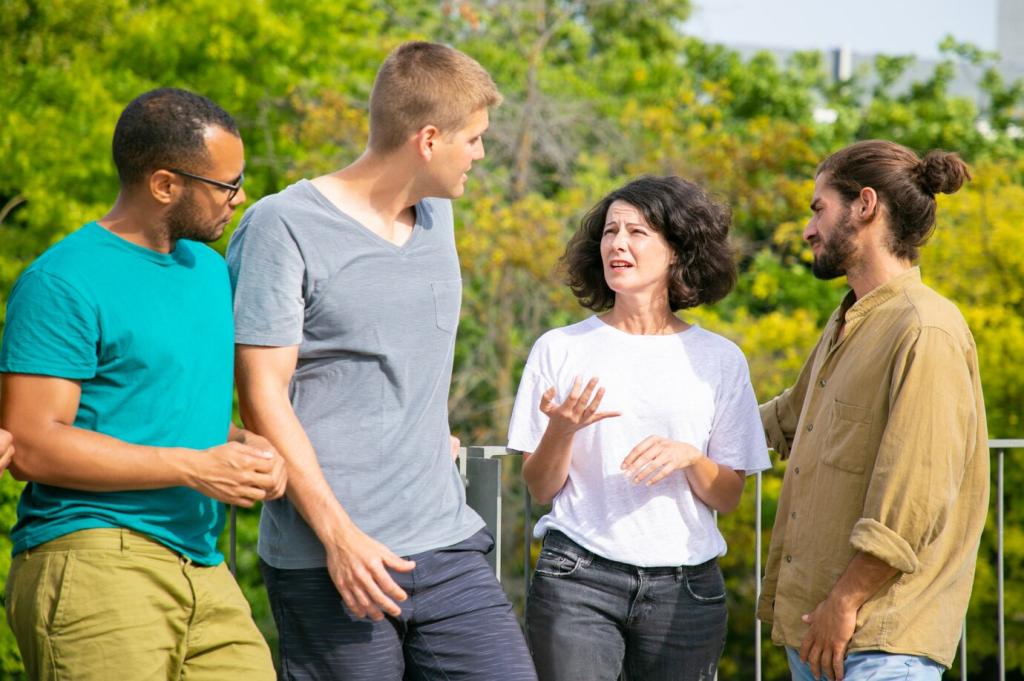How Eco-Tourism Promotes Environmental Conservation: Travel That Gives Back
From Footprints to Funding: How Eco-Tourism Finances Protection
When entrance fees are transparently earmarked, trails get maintained, mangrove nurseries thrive, and anti-poaching patrols stay equipped. Ask operators for line-item allocations, and support destinations publishing annual conservation reports. Comment below with parks you’ve seen investing visitor revenue wisely.


From Footprints to Funding: How Eco-Tourism Finances Protection
Guiding, homestays, and craft cooperatives create steady income tied to healthy wildlife, shrinking incentives for illegal harvests. Look for programs offering microloans and scholarships from tourism proceeds. Share your experience with community-led tours that clearly reinvest in local conservation.

Maya joined a reef restoration day, gently planting a nursery-grown coral fragment while parrotfish grazed nearby. Months later, she funded another rack through a birthday fundraiser. Have you joined a hands-on project before? Share your story and inspire a new volunteer below.

Samuel, a community ranger, pointed to fresh shoots where elephant herds had returned after invasive plant clearing funded by eco-tour groups. He credits consistent visits for steady wages and training. If a guide moved you with their dedication, tag them and celebrate their impact.

In one highland village, former banana poachers now lead birding walks, earning more by protecting nests than raiding fields. Visitors pay into a nest-watch fund managed by elders. Would you join such a walk? Comment with the bird you’d most hope to spot responsibly.
Wildlife First: Ethics That Truly Protect
Feeding wildlife alters behavior and harms health, while close selfies spike stress hormones. Choose hides, long lenses, and patient observation instead. Pledge in the comments to avoid baiting or crowding. Your restraint can be the difference between disturbance and genuine protection.
Wildlife First: Ethics That Truly Protect
Effective guidelines use species-specific distances and quiet periods during breeding, nesting, or denning. Ask operators how they enforce buffers and brief guests. Ready to model best practices? Share your tips for quiet viewing so new travelers learn to prioritize animal well-being.
Wildlife First: Ethics That Truly Protect
Sometimes the most ethical choice is to skip a viewing entirely—extreme heat, drought stress, or sensitive seasons demand restraint. Encourage guides to prioritize welfare over checklists. Have you ever walked away for wildlife’s sake? Tell us how it felt and what you learned.

Measure What Matters: Tracking Eco-Tourism’s Conservation Impact
Carbon accounting beyond flights
Account for lodging energy, food miles, ground transport, and waste. Prefer lodges powered by renewables with verified efficiency upgrades. Offset only through high-quality projects that restore native habitats and community resilience. Subscribe for our vetted list of biodiversity-aligned carbon initiatives.
Biodiversity monitoring with community participation
Support programs training local youths to run transects, camera traps, and acoustic recorders. Travelers can shadow teams, learning protocols while funding gear. Interested in helping standardize data? Download our upcoming checklist and comment with projects that deserve more attention.
Transparent reporting builds trust
Look for operators publishing independent audits, park payment receipts, and species trend dashboards. Celebrate honest course corrections as much as wins. Tell us which reports impressed you, and we’ll highlight them—raising the bar for conservation accountability across the industry.
Your Next Steps: Turn Inspiration into Conservation Action
Plan an eco-tour that funds protection
Pick a destination where visitor fees directly support threatened habitats, then choose a science-driven operator. Book longer stays and fewer legs. Subscribe for our destination briefs and packing list designed to minimize waste while maximizing conservation outcomes.
Support conservation from home
Donate unused miles to ranger travel, adopt a nest or coral frame, and join virtual field briefings that keep projects funded between trips. Comment with your chosen action; we’ll cheer you on and share your ideas with the community.
Join our community and share field notes
Subscribe to the newsletter, drop questions, and post your best low-impact tips. Your voice helps new travelers choose ethical routes—and your photos can highlight successful restoration. Let’s build a living library of journeys that genuinely protect the planet.
